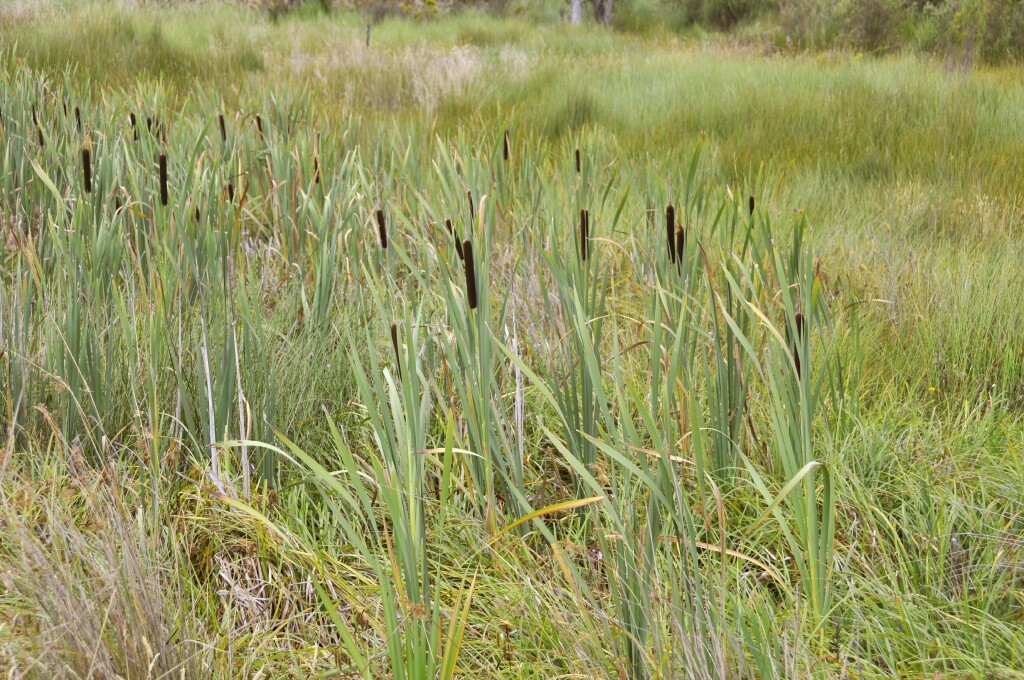Typha latifolia
L. Lesser Reed-maceLeaves grey-green; sheath of distal leaves distinctly auriculate; lamina up to 100 cm long, 1–2 cm wide. Male part and female part of inflorescence not separated or separated by up to 0.5 cm. Pollen shed in tetrads. Female part of inflorescence 10–20 cm long, 15–25 mm diam., blackish brown to dark red-brown, or rarely red-brown; floral bracts absent; stigma narrowly obovate to obovate, usually flat, somewhat fleshy, papillose and darker at apex. Flowers Dec.–Feb.
Wim, GleP, Brid, VVP, VRiv, MuF, GipP, OtP, WaP, Gold, GGr, DunT, NIS, EGL, HSF, HNF, Strz, VAlp. Also naturalised in NSW, Tas. Native in the temperate regions of the Northern Hemisphere. Formerly planted around farm dams etc. for decorative purposes, but now naturalised along slow-moving streams, irrigation channels, swamps and lakes in several localities.
Conn, B.J. (1994). Typhaceae. In: Walsh, N.G.; Entwisle, T.J., Flora of Victoria Vol. 2, Ferns and Allied Plants, Conifers and Monocotyledons, pp. 631–633. Inkata Press, Melbourne.
 Spinning
Spinning

